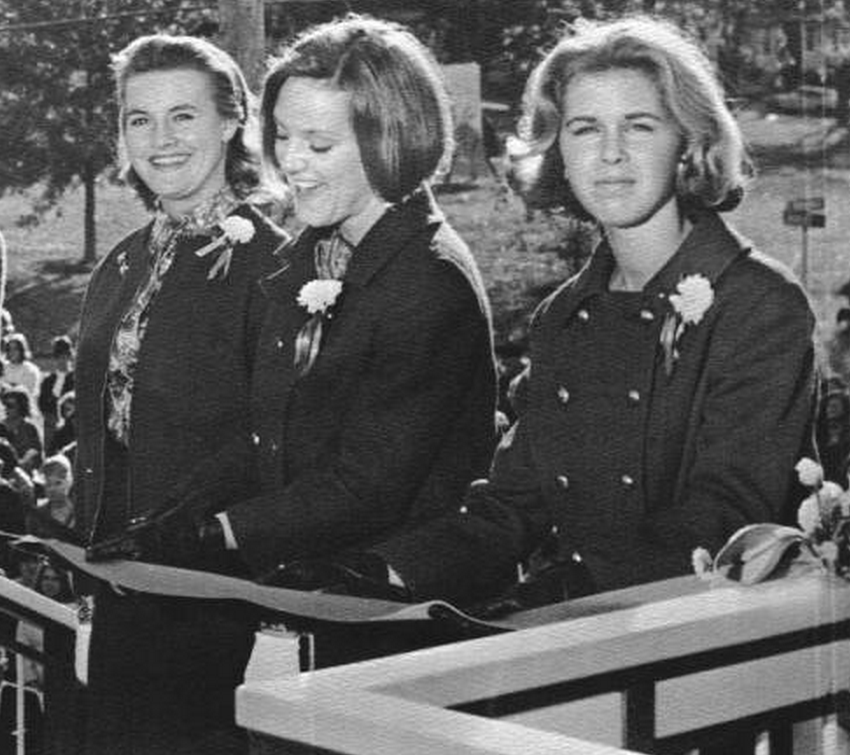For more than 60 weeks, we’ve been taking a look back at the
history of Stephens College through the eyes of the Stephensophia yearbook.
The series corresponded with the Missouri Digital Heritagecollection, a collaboration between the Missouri Secretary of State, Missouri
State Archives, Missouri State Library and the State Historical Society of
Missouri.
Alas, the collection—and this series—ended last week with
1965. Of course, the College has hard copies of the yearbook beyond this point,
but the intention was to always use the online resource to guide the content
for this blog.
It’s been a fascinating series that explored the changes at
Stephens from year to year. And, of course, in the later years, it's been fun to follow up and see where a few Stephens Women are today.
We started with the first edition of the Stephensophia in 1900 and explored areas of studies--which aren't drastically different from today. Young women were studying history, economics, ethics, psychology, logic, modern languages and science.
The 1912-13 school year marked the beginning of James
Madison Wood’s era on campus. We watched as he truly transformed the
educational experience at Stephens through the 1940s.
In 1918, we saw Stephens rally around WWI efforts.
Then 1921 brought about another tradition with the arrival
of Jessie Burrall. The Burrall program at Stephens swelled into services,
courses, lectures, choirs and other popular activities over the next 40 years.
Of course, 1922 brought us the Ten Ideals and until 1965, we
saw the young women who represented each idea every year after.
The 1920s also brought us our educational program and
children’s school and our equestrian program.
In the 1930s, we watched as our small college transformed
into a larger school with, perhaps, more polished students. Louise Dudley
became dean of faculty and, of course, would go on to shape the humanities not
only at Stephens but across the country.
Poet Carl Sandburg visited and famed scientist H. Bentley
Glass was on our science faculty. Then, in 1938, Maude Adams arrived,
solidifying our reputation as a leader in theatre education (today, our theatre
program is ranked 12th by The Princeton Review).
The 1940s were also pivotal for women and women’s roles in
the world with World War II opening up new career opportunities. At Stephens,
this meant the creation of the aviation program. The annual fashion show, which
continues today, is also born this decade as Muriel King is hired as the
director of Fine and Applied Fashion Department.
The College continued to welcome prominent guests to campus,
including Eleanor Roosevelt and Dorothy Thompson.
Wood left us in 1947.
In the 1950s, we watched Stephens students become more
interested in politics and foreign relations.
The new Chapel opened in 1957, just as students were
starting to question the college’s emphasis on religion.
Those interests continued in the early 1960s with new Young
Democrats and Young Republicans clubs—organizations, by the way, that have been
revised on campus this year.
In 1962, we began transitioning from a two-year to a
four-year college, and, of course, 1965 brought us the James Madison Wood
Learning Center, which serves as the academic heart of campus today.
One of the highlights of working on this series has been meeting Stephens Women over the years and seeing the wonderful successes they accomplished since graduation.
Thanks for reading. We hope you’ve enjoyed this series as much as we’ve enjoyed exploring the pages of Stephens’ past.
One of the highlights of working on this series has been meeting Stephens Women over the years and seeing the wonderful successes they accomplished since graduation.
Thanks for reading. We hope you’ve enjoyed this series as much as we’ve enjoyed exploring the pages of Stephens’ past.








